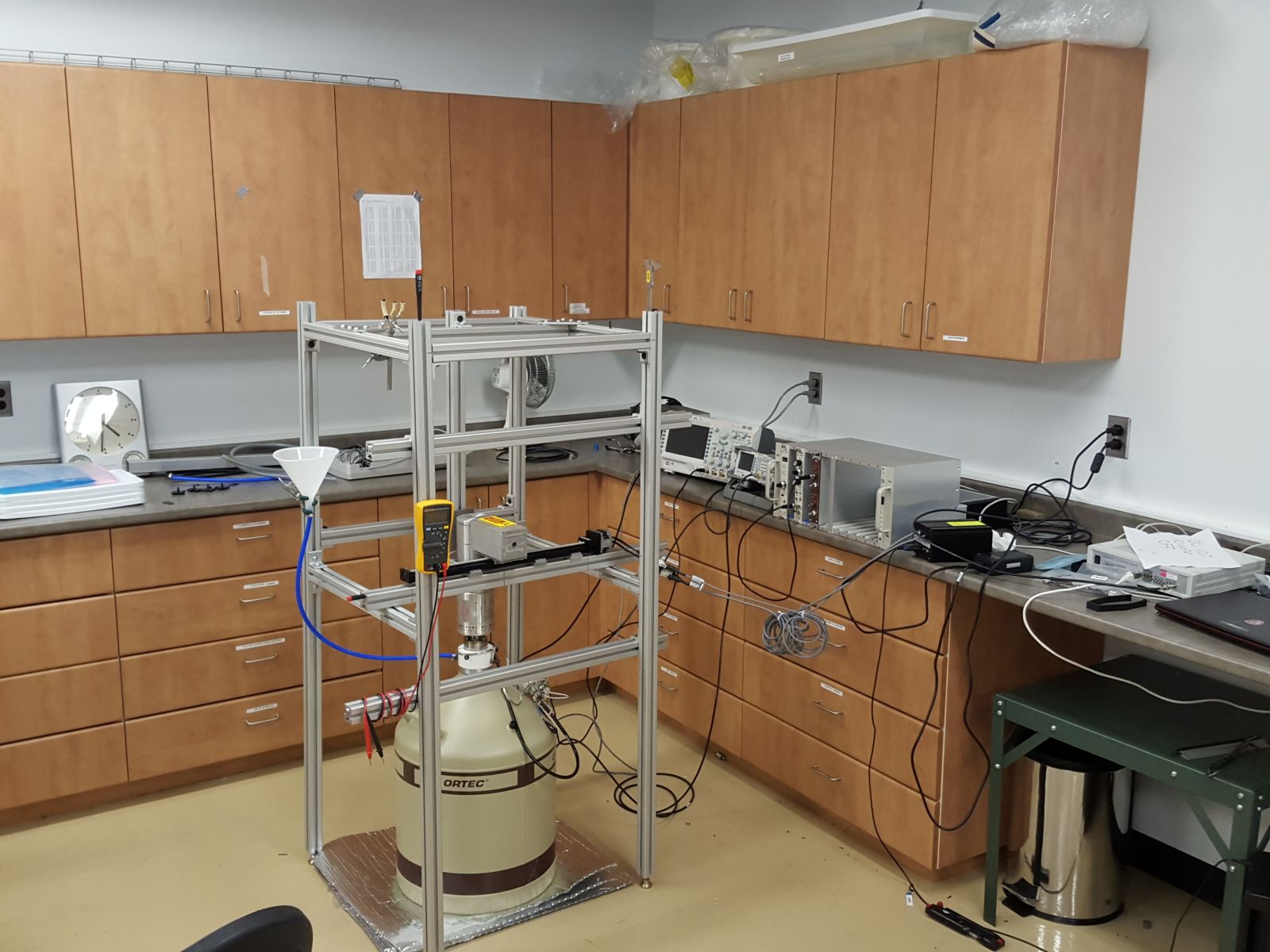Our lab
Our lab is housed in Stirling Hall and consists of a large clean room, with ample space to develop new experiments.

Our detectors
ORTEC PPC
The ORTEC p-type point contact detector is a 1kg natural germanium detector that is identical to those currently deployed in the Majorana Demonstrator. Our main use of this detector is to characterize surface events on the detector so that we may better understand the sensitivity of the Majorana Demonstrator at low energies, where one is sensitive to a potential dark matter signal and new physics. Long term, we plan to use this detector in a liquid argon test stand.
The ORTEC PPC is shown in the picture on the right along with a scanning system developed by our students. The funnel is used to fill the dewar with liquid nitrogen to keep the detector cold.
LPPC
The Large PPC is currently being manufactured in France and is expected to be delivered to our lab in Spring 2019. This will be the largest PPC detector in the world (2.4kg) and will be used to study the performance of such large PPC detectors. This detector is equipped with an additional electrode in order to localize the axial position of events in the detector. Furthermore, the detector is housed in a mechanically-cooled variable temperature cryostat that will allow us to study how temperature affects charge propagation in the detector.
Our computing infrastructure
We operate a computing server in the building to analyse data and train machine learning algorithms. Our server hosts a Jupyter Notebook hub that students use to analyse data. Our server is equipped with 2 ten-core hyper-threaded CPUs (2.2GHz Xeon E7, effectively 40 CPUs), 64GB RAM, and an NVIDIA Titan-X GPU (3584 CUDA cores, 1.4 MHz, float precision, 12 GB RAM). We also have access to a wide range of computing facilities hosted by Compute Canada.